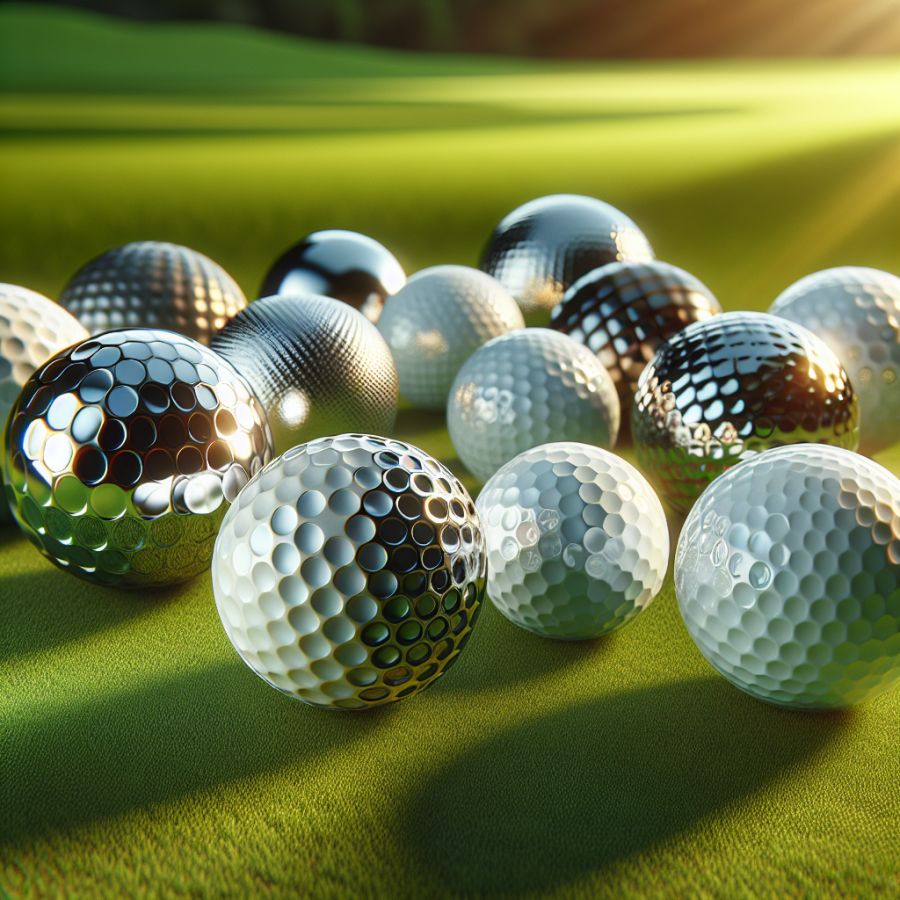Understanding the Different Types of Golf Balls
Golf balls may all appear similar at a first glance, but they are created with specific design elements intended to enhance certain aspects of a player's game. This article will take a closer look at the different types of golf balls available in the market, giving you a comprehensive guide on which type suits your style and skill level best.
One-Piece Golf Balls
One-piece balls are made with a single solid piece of Surlyn with dimples molded in. These types of balls are mainly used on driving ranges and mini-golf courses. They are the cheapest to manufacture and are known for their durability. However, they don't offer the distance or performance benefits seen in other types of balls. This makes them unsuitable for professional gameplay but an excellent choice for beginners due to their lower cost.
Two-Piece Golf Balls
This type of golf ball is likely the most common and is popular amongst casual and amateur golfers. A two-piece golf ball consists of a solid core, typically made from rubber or resin, encapsulated by a durable ionomer cover. These balls are designed for maximum distance with a harder feel. They are highly resilient but offer less spin control.
Three-Piece Golf Balls
Three-piece balls contain a solid rubber or liquid core, a layer of enhanced rubber or a liquid-produced layer and a molded cover of durable Surlyn, Urethane, or Balata. The additional layer allows for more spin separation and control — meaning golfers can expect more spin from their wedge shots, and less from their drives. They offer a medium compression and are a top choice for intermediate golfers seeking better control and performance.
Four-Piece Golf Balls
These golf balls consist of a rubber core that is designed to provide maximum energy transfer, an inner cover that increases speed, an outer cover that generates high spin and speed on longer shots, and a soft Urethane cover that enhances control with wedge shots and provides a softer feel. These balls are usually played by low-handicap and professional golfers, as they provide great control and distance but also require a high swing speed.
Five-Piece Golf Balls
Five-Piece golf balls are the most complex in terms of construction and are designed to deliver optimum performance for every possible shot. Each layer in the ball plays a specific role, and changes depending on the force of the swing.
Factors to Consider When Choosing the Right Golf Ball for You
To adequately navigate through the array of golf balls, there are several factors that you should consider. These factors will guide you in choosing a ball that suits your playing style and aids your game improvement.
The first factor to consider is your swing speed. This is significant as each golf ball is designed to perform optimally at certain swing speeds. Manufacturers typically specify the recommended swing speeds for their products, so understanding your swing speed will help you buy a golf ball that will maximize your distance. For instance, golfers with slower swing speeds usually benefit from softer, low-compression balls. In contrast, those with faster swing speeds may find multilayer golf balls with a higher compression rate more suitable.
Another critical factor is the ball's feel. This aspect is quite subjective, as what feels good to one golfer might not suit another. A golf ball's feel is determined by its construction and design. Some players prefer a soft feel, which provides better control around the green and produces less noise at impact. Others, however, prefer a harder feel, which typically provides better distance but less spin and control.
The level of your experience and skill in golf also influences the type of ball you should use. If you are a beginner or high handicapper, you might want to choose a two-piece golf ball. These balls are designed to reduce sidespin, helping your shots fly straighter. They also tend to be more durable and less expensive. On the other hand, if you are an experienced golfer with a low handicap, you would probably benefit from a multilayer ball that provides more spin and better control.
Price is also a significant factor. While expensive doesn't always mean better, golf balls vary significantly in cost. It's essential to choose a ball that fits your budget, but also meets your performance needs and helps maximize your potential on the golf course.
Consider your typical golf course conditions. If you regularly play in windy conditions, a high-spin ball could be troublesome as the wind can drastically affect the ball's direction. Thus, a low spinning ball might be a better fit. On the contrary, if you typically play on soft, wet courses, a high-spin ball could be beneficial, as it can provide more control and stop quickly on the greens.
Looking at the ball's construction can also offer some insight. Golf balls can be categorized into one-piece, two-piece, three-piece, four-piece, and five-piece constructions. Each type of construction offers different benefits and drawbacks.




